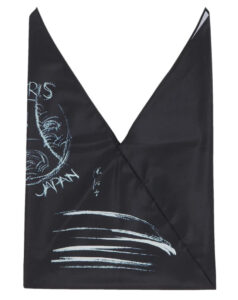According to Miss Tweed, a well-regarded industry publication known for its credible reporting on luxury watches, Swiss watchmaker Breitling is poised to acquire the currently inactive Swiss watch brand Gallet in the coming month. While Breitling has not officially confirmed the acquisition, the news aligns with CEO Georges Kern’s publicly stated ambition to add a brand positioned below Breitling in terms of pricing. If true, this move follows Breitling’s recent $70 million purchase of Universal Genève in December 2023, further signaling its intent to expand its portfolio by reviving historic watch brands.
Gallet: The Bequest
Gallet is one of the oldest names in Swiss watchmaking, with roots tracing back to 1466. The brand gained prominence in the 19th and 20th centuries, becoming known for its high-quality chronographs, military watches, aviation instruments, and sports timepieces. Gallet timepieces were favored by military forces worldwide, including the U.S. Army and British Royal Air Force, as well as motorsport professionals.
Despite its rich history, Gallet has remained largely dormant in the modern watch market. Unlike brands such as Longines or Zenith, which have maintained consistent visibility, Gallet’s absence from the mainstream has led it to become more of a collector’s niche rather than an active player in contemporary luxury watchmaking. If Breitling acquires and revitalizes Gallet, it could restore the brand’s prestige while positioning it as a more affordable alternative within its expanding portfolio.
Why Would Breitling Acquire Gallet?
Breitling has undergone a transformation since Georges Kern took over as CEO in 2017. Under his leadership, the brand has shifted away from oversized, hyper-masculine designs to a more refined, vintage-inspired aesthetic, appealing to a broader audience. The success of this repositioning suggests that Kern understands how to balance heritage with modern appeal—a skill that could prove invaluable in bringing Gallet back to life.
There are several strategic advantages to acquiring Gallet:
Filling a Price Gap Below Breitling
• Kern has previously hinted at acquiring a brand that sits at a lower price point than Breitling. Gallet could serve as a bridge between entry-level luxury and mid-tier luxury timepieces, allowing Breitling to capture consumers who might otherwise opt for brands like Longines, TAG Heuer, or Tudor.
Leveraging Chronograph Heritage
• Breitling and Gallet share a strong heritage in aviation and chronographs. By integrating Gallet into its ecosystem, Breitling could use its existing expertise to create new models that honor Gallet’s past while appealing to today’s buyers.
Expanding Breitling’s Influence
• Reviving Gallet would give Breitling a multi-brand strategy akin to larger groups like Swatch, Richemont, and LVMH, allowing for greater market segmentation and diversification.
Heritage-Driven Marketing
• The recent trend of resurrecting defunct or dormant watch brands—such as Vacheron Constantin reviving the 222 or TAG Heuer bringing back the Carrera—demonstrates the appeal of leveraging historic names in modern watchmaking. Gallet’s rich history provides a compelling narrative for collectors and enthusiasts.
Brand Recognition and Market Positioning
One of the biggest hurdles in relaunching Gallet is its relatively low brand recognition among today’s luxury watch buyers. While vintage collectors appreciate Gallet, it does not have the mainstream appeal of Breitling, Omega, or Rolex. Breitling would need to invest heavily in marketing to reintroduce Gallet to a modern audience while ensuring it does not cannibalize sales from its own core collection.
Production and Distribution Strategy
Breitling would need to establish a clear production and distribution strategy for Gallet. Would it be integrated into Breitling’s existing manufacturing facilities, or would it remain independent? Would Gallet be sold through Breitling’s existing retail network, or would it require a separate distribution model? These decisions will significantly impact costs and operational efficiency.
Economic Headwinds in the Luxury Watch Industry
The global luxury watch market is facing significant challenges. According to WatchPro, leading brands such as Swatch, Richemont, and LVMH are expected to see double-digit sales declines in 2024. If this trend continues, Breitling may struggle to achieve immediate profitability with Gallet. Expanding in a declining market carries inherent risks, and Breitling’s ability to manage its finances during this period will be crucial.
Breitling’s Growth Strategy Under Georges Kern
A Track Record of Transformation
Since joining Breitling in 2017, Georges Kern has overseen a remarkable transformation. He has streamlined the brand’s collections, introduced successful vintage-inspired designs, and expanded Breitling’s presence in direct-to-consumer retail. His leadership has been widely praised, but with the impending relaunch of Universal Genève in 2026 and a potential Gallet acquisition, he faces new challenges.
The Relaunch of Universal Genève
Breitling’s $70 million acquisition of Universal Genève was a significant move, but the brand has not yet re-entered the market. Set to relaunch in 2026, Universal Genève is a name with tremendous prestige, particularly for collectors who value its heritage in haute horology and chronograph innovation.
However, the simultaneous management of Universal Genève and Gallet could stretch Breitling’s resources thin. Unlike Universal Genève, which has a clear positioning as a high-end brand, Gallet’s market position is less defined. Breitling must carefully navigate both relaunches to avoid internal competition and ensure each brand appeals to its intended audience.
What Comes Next for Breitling?
If the reports from Miss Tweed prove accurate, Breitling’s acquisition of Gallet could mark another bold step in its evolution. However, the success of this move will depend on several factors:
Clear Brand Differentiation – Gallet must be distinct from Breitling and Universal Genève in terms of design, pricing, and target audience.
Strategic Investment in Marketing – Given Gallet’s relatively low name recognition, Breitling will need a strong marketing strategy to build consumer interest.
Economic Conditions – If the broader luxury watch industry continues to decline, Breitling may need to adjust its timeline for profitability.
Production and Distribution Efficiency – How Breitling integrates Gallet into its supply chain will determine its operational success.
In the coming months, industry observers will be closely watching Breitling to see how it manages these challenges. If executed well, the acquisition of Gallet could position Breitling as a formidable player in the multi-brand luxury watch space. However, if mismanaged, it could become a costly distraction at a time when the industry faces broader headwinds.
As of now, Breitling has yet to confirm the acquisition. If and when it does, the watch world will be eager to see how Georges Kern and his team plan to bring Gallet back to life.
No comments yet.








